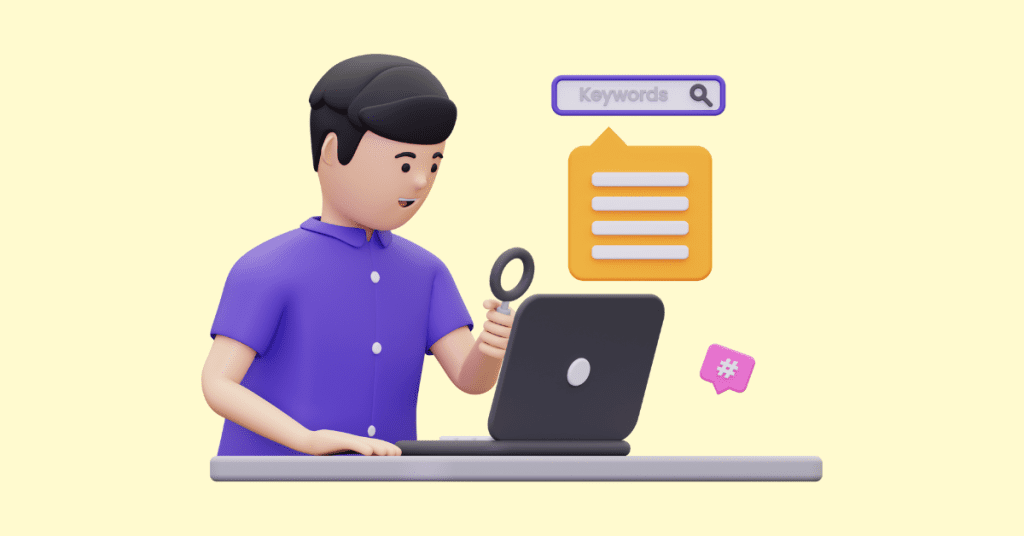To get organic traffic online, you can either get your website on social media to reach more people or get your website on the top of the search engine search results to get seen by more people. Getting seen on social media simply means setting up your profile and creating quality content and sharing it with more people. But to rank top on the search engine results means you need to optimize your website to be SEO friendly. You can do it by optimising your on-page SEO as well as building your off-page SEO.
Google is a big search engine platform that processes hundreds of thousands of searches every second. When people search on Google for a product, they are looking for a solution and are mostly ready to buy. They just need a reason to buy, and you are giving them the answer on your page.
The search engine is being seen as the authoritative place for a reliable information source. By ranking on top of the search results, your website will be seen as the authority in your niche as well. People will trust you like how they trust the search engine to rank you high. And hence, you should definitely optimize your site to be search engine friendly. We call this the on-page SEO.
What is SEO?

SEO, search engine optimization is a strategy for website owners to optimize their website to improve its visibility and ranking in the search engine results pages (SERPs). SEO is crucial for digital marketing. It helps businesses to attract organic traffic, increase online visibility, and generate leads and sales.
Search engines, such as Google, use complex algorithms to rank websites based on various factors such as keywords, content quality, relevance, and user experience. SEO is the strategy to optimize your website for the search engine to index and rank your website easily. And also higher in the search results.
In general, SEO can be broken down into two main techniques. On-page and off-page SEO.
Read more on WordPress SEO Hacks
What is On-page SEO?
On-page SEO refers to the techniques used to optimize the website’s content, structure, and HTML code. This includes keyword research, content creation, meta tags, headers, image optimization, and internal linking. The goal of on-page SEO is to make the website more user-friendly and relevant to the search query.
For example, after you have the target keyword selected for your website, you need to optimize it for your title tag, meta descriptions, headings, contents and URL structures. Besides, your image alt tags and file names should be relevant to the target keywords in order to optimize for the search engine.
What is Off-page SEO?
Off-page SEO refers to the techniques used to improve the SEO outside your website. It means increasing your website’s reputation and authority. Differing from the on-page SEO, off-page SEO focuses on link building, social media marketing, and online directory submissions.
Instead of how you optimize your content, the off-page SEO is determined based on how your content is being publicized by others on the internet.
Why on-page SEO is important?

Your website is like your storefront, but the difference is that this is a digital storefront which is virtual and there is no actual salesperson standing in front. This is why, when your potential customers visit your sites, you want to help them to get what they want easily.
This is why you should optimize your website content based on on-page SEO techniques in order to provide a better user experience for them. Take your website as your salesperson, you are guiding your potential customers step by step looking for the answers they need and in the end, getting them to make a purchase.
How to optimize your website for on-page SEO

Search engines care about their user experience as well. That’s why it will update its SEO ranking algorithm regularly. Search engines like Google will provide clear guidelines of what they are looking for in your website to rank it higher in the search results.
Although search engine does update their SEO algorithm, it might affect your ranking due to the changes. However, the basic on-page SEO is still the same. Keep it simple and easy to use for your website visitors. Most of the time, a simple tweak is sufficient to get your website on track.
To optimize your on-page SEO, there are some evergreen techniques that you can follow.
1. Keyword research
The first and most important step in SEO optimization. You need to know which keywords you want to focus on in optimizing is to know which keyword you want to focus in every page. The goal of SEO is to show your website on the top of the search engine result pages.
The keywords would be the search terms your potential customers will type in the search bar to look for what they want.
To research the keywords you want to target, you should first look at the trending search and the popular keywords in your niche. You want a keyword that people are searching for, but not a very popular keyword as when the competition is high, it is very difficult to rank.
A good keyword type would be the long tail keyword. Specific long keywords that people will actually key in when searching for the answers. This type of keyword will have less competition as it is very specific and not everyone will be ranking for the same keywords.
Then, to look for these keywords, you can use keyword research tools like Google Keyword Planner, Aherfs and SEMRush to look at the search trend in Google.
2. Metadata Description

Metadata is the summary of your website that will show below your title tag in the search results. It will not be on your website itself but will be in the search result. If you are using WordPress to build your website or an eCommerce builder like Shopify there will be a specific field for you to edit your metadata description.
- Title tag. A title tag is an HTML element that provides a brief description of the page’s content. In the search result, it is the blue linked text that you can click to visit the page. For Google, this is like that signboard for your website. It should be short, precise, and have your keywords in it.
- Meta Description. Below the Title tag, there will be a short summary of what your website is about. This description tag is what we call the meta description. It’s about three times longer than the title tag and it’s like a sub-headline that explains more about your website. This might not be the most important for Google to rank your website, but it is important for potential website visitors to read about what they are going to expect and what is on your website.
- Robots. Robots is the HTML element that is not shown anywhere, on your website or the search result. However it is important for Google to index your website. The Robot will tell Google whether to index your page or not. If your robots contains “noindex” tag, then the search engine crawlers will not index the page. Your page will not be in the search result.
3. Optimize Your Content
This is the content of the webpage that you want to rank for. A typical structure of webpage content will be the headline, subheadline and contents. And for on-page SEO, you are going to include the target keyword in your content.
This includes your headers. There are different levels of headers on your webpage. <h1>,<h2>,<h3>,<h4> and so on. First of all, the header is important to separate your content into different sections so that it will be easier for Google and your visitors to scan through your website. So, be sure that you include the target keywords in your headers.
Next, depending on the length of your keywords, you should include them in your website content. The shorter the keyword, the more you should expect it in your content. Not only that, search engine loves skyscraper content. Skyscraper content simply means a very long post that you create, including everything about the topic. And for some cases, the longer is your content, the better people will scan through it. And believe it, the word count is one of the criteria of ranking as well if your content is good.
4. Website Performance
Fast-loading website will get more traffic than a slow website. This is exactly the user experience that you can give them. When someone visits a website, they will only wait for 3-5 seconds maximum for it to load. If it doesn’t load on time or complete loading, most probably they will leave.
Not only that, most website owners only focus on desktop sites but not mobile sites. You should focus on both and optimize for fast loading.
To do this, you should minimize the apps or plugins installed on the website. This will avoid unnecessary load on your website. Not only that, but your server location, loading time and image optimization is also important.
If you are unsure of your website performance, you can always test it with Google’s free PageSpeed Insights tool.
5. Schema
A schema refers to a structured data markup that website owners use to provide additional information about their websites to search engines. The Schema markup helps search engines understand more information about the website. It’s similar to the metadata, but it’s designed for the search engine to read and understand only. And not visible to the users.
Schema markup is essentially a set of HTML tags that website owners add to their websites to provide more information for the search engine to understand the content on those pages. This information can include details about the author, publish date, content type, reviews, images etc.
For example, if you search for a restaurant on Google, you may see a listing that includes the restaurant’s rating, reviews, and price range. This information is provided by schema markup on the restaurant’s website.
Types of Schema Markup
There are many different types of schema markup that website owners can use to provide search engines with information about their content. Some of the most common types of schema markup include:
- Organization schema markup – provides information about the organization that owns the website, such as its name, address, and phone number.
- Article schema markup – provides information about a news article or blog post, such as its headline, author, date published, and more.
- Product schema markup – provides information about a product, such as its name, price, image, and more.
- Review schema markup – provides information about a product or service review, including the reviewer’s name, rating, and comments.
Schema markup is an important on-page SEO technique that website owners can use to provide search engines with more information about their content for better ranking. This helps search engines present that content in a more useful and informative way to users, which can lead to higher click-through rates and more traffic to the website.
Read more on WordPress SEO Hacks
Final Thoughts – How To Optimize Your On-Page SEO
Optimizing your blog posts for SEO is a continuous process that requires consistent effort and attention to detail. By following these tips, you can create blog posts that rank higher in search results, drive more traffic to your website, and ultimately help you achieve your business goals.





